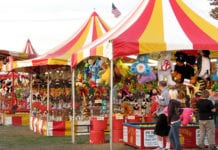My recent return to the work of Patricia Kuhl got me thinking about a book of hers I have always enjoyed called The Scientist in the Crib.
Flipping through the book the other day, a question popped into my mind: What distinguishes a child from an adult?
There are multiple answers possible. Which would you choose? Size? Experience? Autonomy? The ability to survive? Wisdom?
How about the number of teeth? The right to vote? Memories and regrets?
Whatever distinction you prefer, there is a major difference between children and adults that human beings were completely unaware of until very recently: brain activity.
Brain Basics 101
If you already know the following information, feel free to skip to the next section. But if you are not Joyce Myers and writing a book with me about children’s brains, you might want to keep reading!
Much could be written about the differences between the brains of children and adults. What I want to focus on today is the activity happening inside these brains – a difference far more important than the mere size differential.
The adult brain has around 100 billion nerve cells, or neurons. That’s roughly the same number of stars in the Milky Way (and coincidentally the same number of Milky Ways I’ve eaten in my lifetime!).
What most people don’t know is that babies have roughly the same number of neurons as adults. Yet their brains are only a fourth the size of adult brains. As Kuhl asks in her book, “What changes, then?”
The answer is: the number of connections made in the brain. Brain cells are similar to people in that they want to be in communication with others brain cells. They are constantly firing in search of new connections to be made. Hence the now-coined phrase, “Cells that fire together wire together.”
Here’s how it works, in a nutshell. Each cell has axons and dendrites. Axons send information out from the cell; dendrites send information into the cell. When the axon of one cell connects to the dendrite of another, a synapse is formed, allowing communication via a super fast electro-chemical connection.
Most of the connections made during a lifetime are the result of experience. As babies’ experiences increase, so do their neural connections.
Logically, then, one might suppose the number of connections increases from childhood to adulthood, where it reaches its peak. But that is not what recent brain studies have discovered.
In fact, it is children whose brains are the most active. We know this from studying glucose consumption in brains. Active nerve cells burn fuel in the form of glucose, and simply put, children burn more than adults. A lot more.
And not just seven-year-olds, either. A two-year-old has equal levels of energy consumption as adults. By the age of three, the child’s brain is twice as active as an adult’s! As Kuhl writes, “Preschool children have brains that are literally more active, more connected, and much more flexible than ours.”
Past the age of ten, the number of connections begins to decline, so that by the age of 18 the number of connections is equal to adult levels.
Many parents express great anxiety over this fact, as Kuhl has found when she speaks to parents about children’s brains.
But the truth is that this pruning process is vital to adult life. In essence, the brain begins to decide which connections are essential and helpful and which are trivial. The important connections become reinforced while the weak ones are allowed to fade away. (Maybe that’s why you can never find your keys or remember why you walked into a room!).
This process is similar to that of gardening, so it should not cause unwarranted worrying on any parent’s part. This plasticity of the brain is what distinguishes us from computers – we can learn and adapt, grow and survive.
What Does This Mean for Parents and Teachers?
I find a several helpful lessons here.
The first would be that we need to allow children’s brains to be free. Before we begin pruning them, we must provide them with room to grow.
This means giving children interesting ideas to think about, fun projects to explore, and new experiences to try out. It means encouraging their efforts to invent, create, and imagine.
It also means allowing them to make mistakes and not stigmatizing their errors as “wrong” or “bad.” Children, like adults, learn from trial-and-error. But we do not want to make them hesitant or fearful, like adults so often are, about trying new things.
Connected to this idea is we must praise effort and not merely ability, which I have covered in a previous article.
A second practical lesson I see illustrated is that we ought to help children think things through. Rather than hand them the answers or herd them toward consensus, we ought to provide questions that get them engaged in real thinking, problem solving, and idea generation.
When we reduce learning to multiple-choice tests, we shortcut the true potential the process holds. It would be the equivalent of relentlessly pruning a plant to the point of discouraging many avenues of growth.
A final lesson I take away from learning about children’s brain activity is that while we do need to prune, we also must give them the tools to prune themselves.
That is a major reason why I love the Classical education model. Its goal is to produce autonomous, lifelong learners who can apply their thinking to problems beyond the classroom and well into their adult lives. It also embraces their natural curiosity and desire to ask questions.
When the Garden Analogy Fails
As much as I like garden analogies for raising and teaching children, all analogies have flaws and fall short at some point.
In the end, children are not flowers or plants. Mostly this is because they have minds. That is why we can – and should – give them the tools to prune themselves. They simply do not require the same type of supervision from us “gardeners” as plants do. Rather they need room to be allowed to grow freely before too much pruning begins.
Experience will help them, too. Plenty of pruning will occur naturally from life. So I am not suggesting that children be freed from rules, boundaries, or expectations. Far from it. Rather, I am saying their ideas must be given room to grow.
As we age, we become more set in our ways and less open to new experiences. There is physical proof of this in our brains. We lose the energy and openness we once had, even at the level of the brain.
At the same time, this pruning process allows adults to become more specialized in their knowledge, more wise from their experiences. We learn that we do not need to try every single jelly bean flavor anymore, just as we have a pretty good idea of what our strengths and weaknesses are.
Fortunately, adults still possess the potential to form new connections, which is why I write blogs like this – in hopes that they will try out new ideas, especially regarding their interactions with kids.
But it is children who lead the way in brain activity and energy. That is why we must make a concerted effort to give them room for their minds to grow freely. The same is true of their experiences. Children benefit from our allowing them to enjoy growth and to simply enjoy living.
Not only because of how it will affect them as adults one day, but because they matter right now as children.
And this is why the Bible says in Psalm 130:14, “I praise you because I am fearfully and wonderfully made; your works are wonderful, I know that full well.”
To that, I can only humbly say a resounding Amen!










